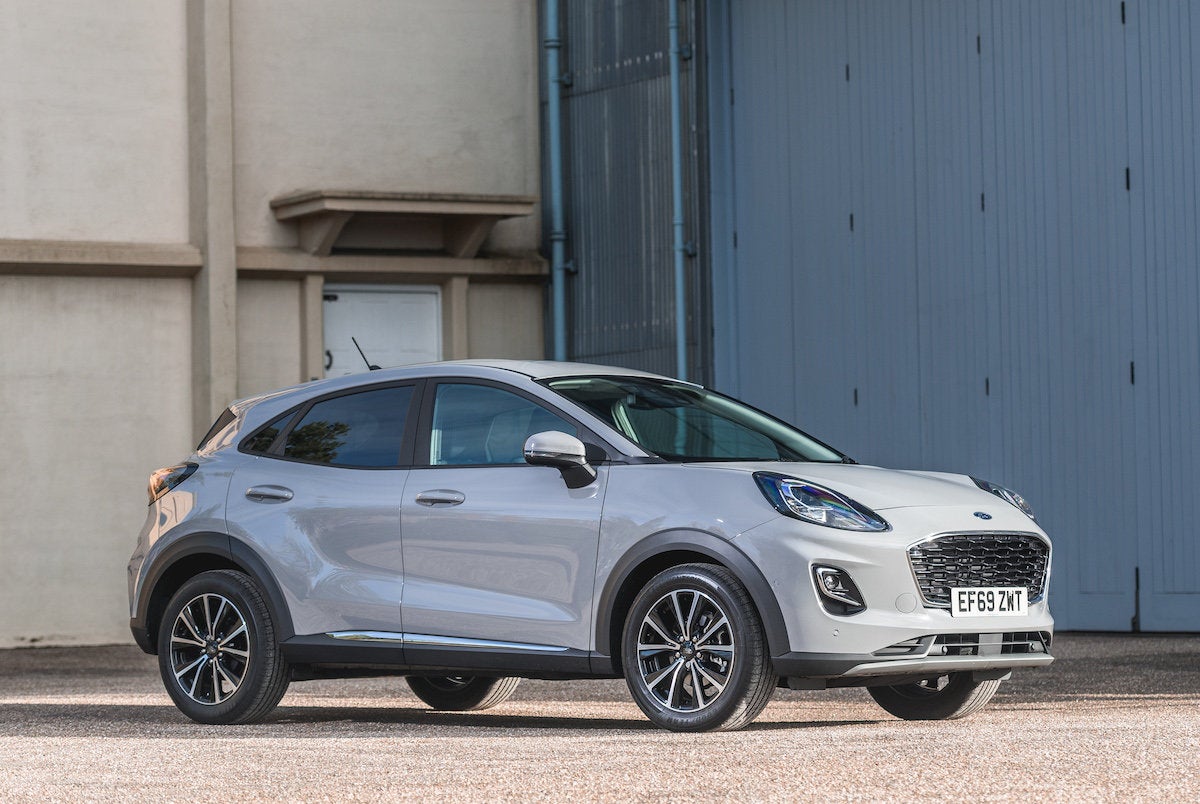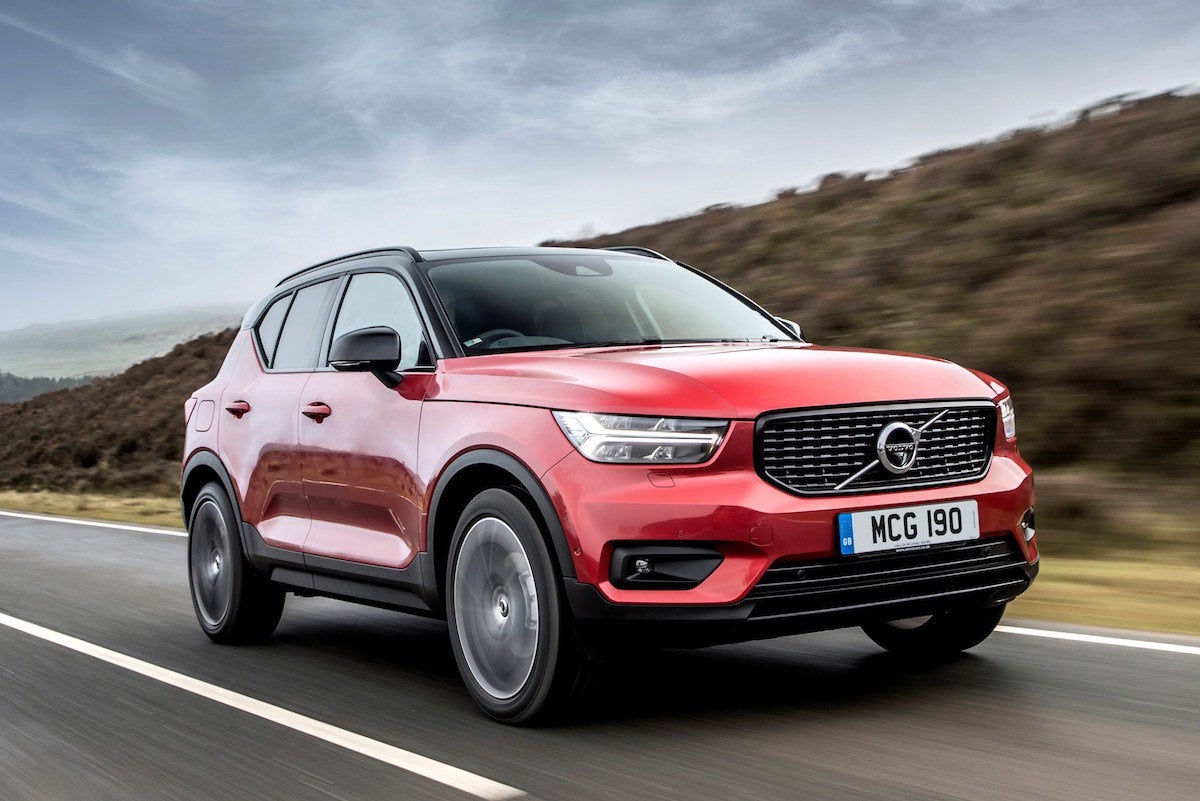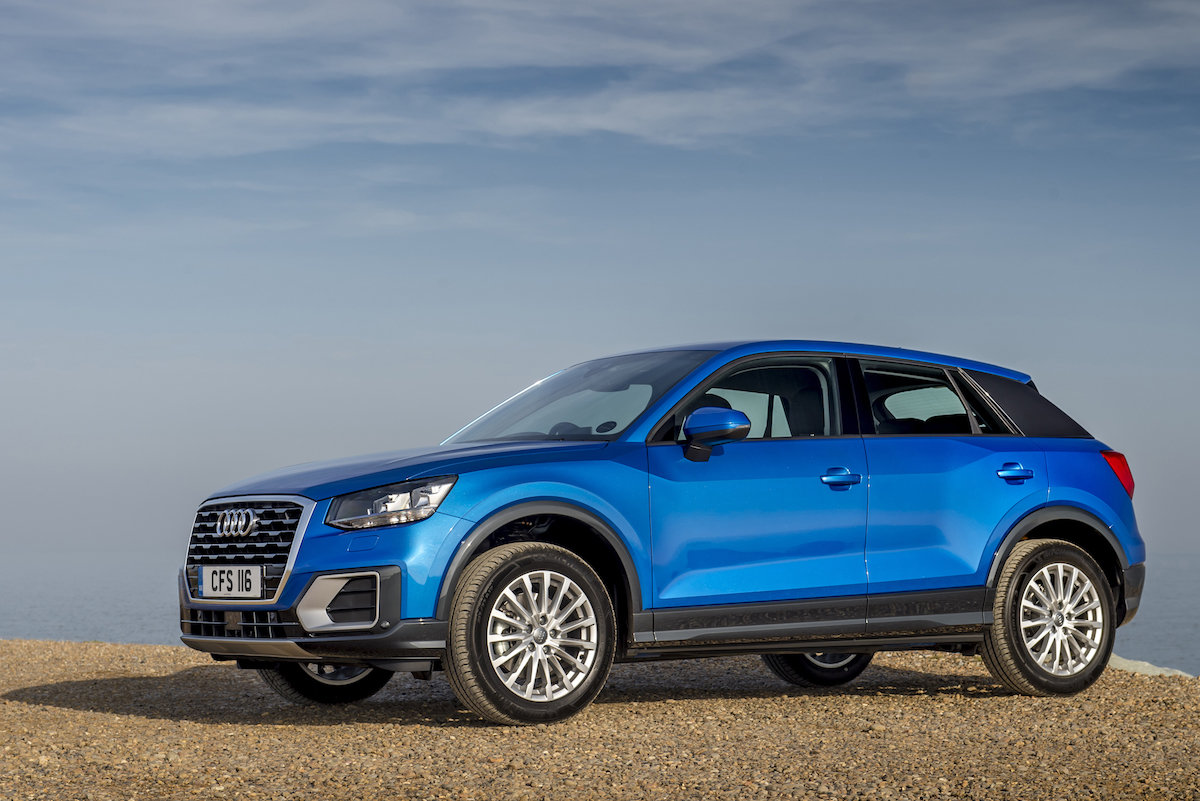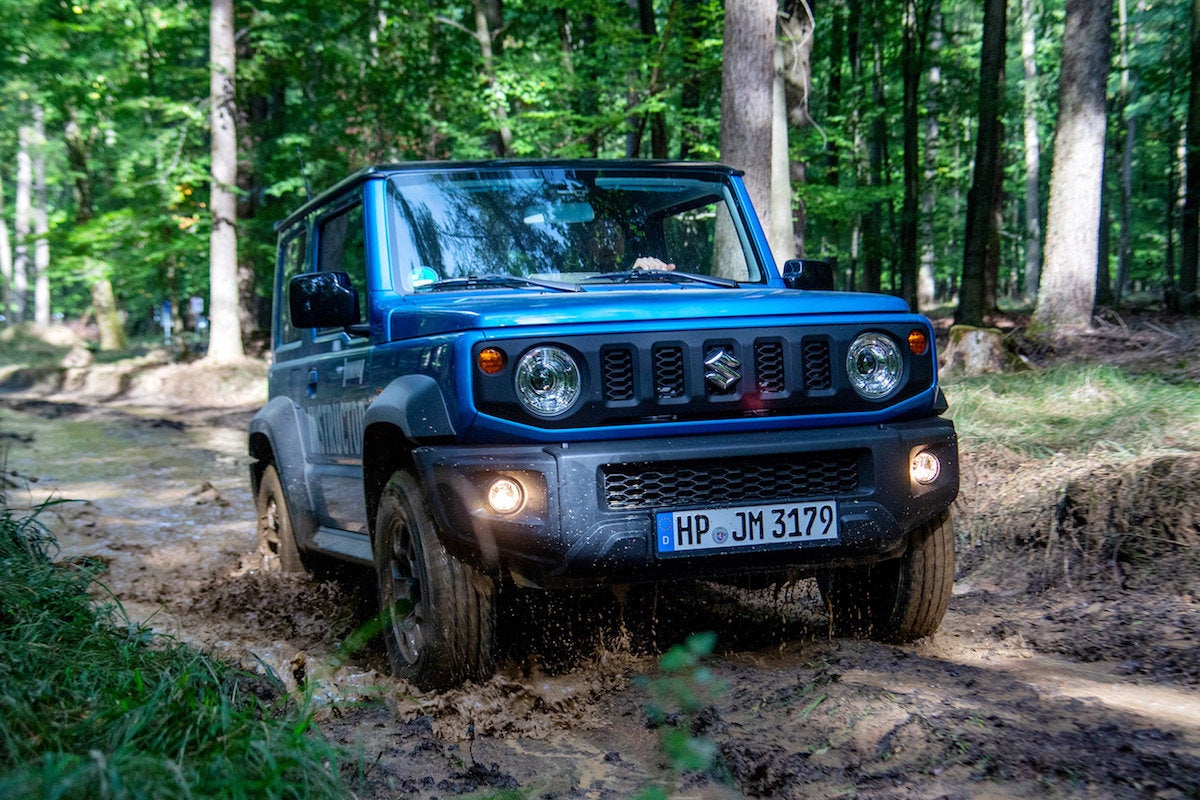The rise of the small SUV – and SUVs in general – has been something to behold over the last couple of decades. Somehow, somewhere along the line, British people developed a taste for rugged-looking cars that looked more at home on a farm or country estate than they did on a metropolitan shopping street, but didn’t want the high running costs or environmental guilt associated with running a proper off-roader. And thus the SUV - a car with off-roader looks but a more conventional and efficient drivetrain - became the go-to choice of family car for many. We’ve fallen for them hook, line and sinker, and they’ve revolutionised the car buying process as a result.
Small SUVs are particularly popular right now, with almost every carmaker producing their own small cars with a raised ride height. These make great alternatives to midsize family SUVs if you live in town, offering barely any less interior space but with compact dimensions that make them easy to drive and park.
But which are the best ones? We’ve selected what we consider to be the standout cars in the class. You can browse each of them one-by-one below, or you can search for great deals on all our chosen cars, all at once, right here.
Best Small SUVs 2024
- Seat Arona (2017-)
- Ford Puma (2019-)
- Renault Captur (2019-)
- Volvo XC40 (2018-)
- Toyota Yaris Cross (2021-)
- Audi Q2 (2016-)
- Hyundai Kona Electric (2023-)
- Kia Niro (2022-)
- Suzuki Jimny (2018-2020)
Seat Arona (2017-)
The Seat Arona is a prime example of the small SUV phenomenon. Built using many of the same components that are also included in the Seat Ibiza hatchback, the Arona is the answer to the question: “What would an SUV version of a supermini look like?”
The Arona is quite an upright-looking vehicle, but it also has the same touches of Iberian style that all recent Seats share, with lots of triangular-shaped graphics. It’s a good-looking family car, with an interior to match and enough technology to satisfy almost anyone. There’s also a range of engines that offers petrol and diesel options, which will suit every pocket, while the trim levels have been simplified, making it easier for buyers to compare specifications.
The final piece of this good-looking jigsaw is the way the Arona drives. The Ibiza is one of the best superminis in terms of how it handles and rides, so it should come as no surprise that the Arona is similarly one of the leading cars in its class on the road, with an easy-to-like blend of engagement and comfort.
It’ll come as no surprise that the Arona shares much mechanically with comparable cars from its sister brands in the form of the Skoda Kamiq, Volkswagen T-Cross and Volkswagen Taigo. Each offers something slightly different, the Skoda more comfort and practicality, the VWs more style and image, so which of the cars you pick will depend what your priorities are.
Seat Arona Review
Search for a Seat Arona on CarGurus
Ford Puma (2019-)
The Puma revives a name from Ford’s past, a compact coupe from the turn of the millennium that had quite a cult following, especially for its sportier versions. The latest incarnation, now a compact SUV that was launched in 2019, is eclipsing even that success by becoming one of the best-selling models in Britain.
It’s easy to see why. Its driving experience was always going to be under the microscope, due to Ford’s longstanding pre-eminence in the mainstream market for ride and handling characteristics, and the Puma passes that examination with flying colours. As you’d expect from a car that shares components with the Fiesta, it’s the best car of its type to drive, with sharp, involving handling and a ride that stays comfortable no matter whether you’re plodding through town or blatting along a motorway.
The Puma is a success in almost every other area, too, from the sharp-looking exterior design to the quality of the interior. There’s also usable technology, in the form of Ford’s Sync 3 infotainment system, plus generous interior space and a clever cubby below the floor of the boot. This not only adds to its capacity, but because it has a drain hole and waterproof sides, it can be rinsed out with a hose, making it ideal for storing dirty boots or sports gear.
Ford Puma Review
Search for a Ford Puma on CarGurus
Renault Captur (2019-)
Renault's is a name that's grown synonymous with practicality over the years - the French company virtually invented the MPV single-handedly, after all. So it should come as no surprise that Renault's imported some MPV tricks into its smallest SUV, the Captur, to help make it one of the most versatile small cars out there.
The second-generation Captur is based on the same platform as the Nissan Juke, but unlike the Juke the Captur features sliding rear seats, which allow you to vary the amount of rear legroom on offer in favour of more boot space. So if you only need room for a toddler in a child seat, you can afford to extend the boot and fit more luggage in. Neat, eh? That isn't all that makes the Captur a great buy, though; it's also terrific value, with most models coming in at less than their rivals when compared like-for-like. And because small SUVs are so popular, those rivals are very, very plentiful. Perhaps more than any other car on this list, the Captur feels most like a direct rival for cars such as the Peugeot 2008, Citroen C3 Aircross, Vauxhall Mokka, Honda HR-V, Mazda CX-30 and Volkswagen T-Roc, but for us, rhe Renault has the measure of most of them when it comes to practicality.
Renault Captur Review
Search for a Renault Captur on CarGurus
Volvo XC40 (2018-)
As a brand, Volvo has been absolutely smashing it in recent years, and the XC40 is arguably the pinnacle of the Swedish company's achievements. One of the smallest cars in Volvo’s SUV range, the XC40 has everything you’d want from a premium compact SUV: cool exterior styling, a high-quality interior, plenty of technology, good practicality and a solid on-road character. And, of course, it’s a Volvo, so safety is at the very core of the XC40’s appeal.
Apart from being well built, with a strong safety cell, airbags galore and all the other crash protection attributes that you’d need, the XC40 also has plenty of active safety features, including some that will be the foundation for future autonomous driving technology. Finally, the XC40 has been offered with pretty much every form of powertrain over the years, from petrol and diesel engines, to the more fuel efficient mild hybrid models and low-emissions plug-in hybrid, to an all-electric SUV with a 250-mile range, all depending on how important fuel economy is to you.
Volvo XC40 Review
Search for a Volvo XC40 on CarGurus
Toyota Yaris Cross (2021-)
Toyota was a little late to the supermini-sized SUV party. In fact, it was almost a decade behind the Nissan Juke. However, if you’re after a small hybrid SUV, the Yaris Cross was undoubtedly worth the wait, as the self-charging hybrid system in the Yaris Cross makes it one of the best small SUVs around when it comes to low running costs.
And while many small SUVs of the Yaris’s size tend to be front-wheel-drive only, the optional i-AWD system on the Yaris Cross means it’s more capable when the going’s slippery than many of its rivals. It’s a clever system, too, consisting of one electric motor on the front axle (just as with the regular car) and an extra one on the rear axle, meaning it’s quite a light system and therefore loses relatively little fuel efficiency compared with the 2WD model.
Toyota Yaris Cross Review
Search for a Toyota Yaris Cross on CarGurus
Audi Q2 (2016-)
Audi’s SUVs have proven very popular over the last decade or so, with the likes of the Q5 and Q7 often seen as large SUVs to aspire to. But Audi hasn’t just gone large: it has also produced the very worthy Audi Q3 to go up against the likes of the BMW X1, Mini Countryman, Mercedes GLA and Range Rover Evoque, and also the more urban, more crossover-like Audi Q2, which brings the quality of the premium sector to the small SUV class.
The Q2 brings a good selection of abilities, including the sophisticated exterior styling, and the build quality and high-quality materials used in the cabin, although there are some harder plastics that you wouldn’t find in pricier Audis. There’s technology aplenty, too, with the touchscreen-based MMI infotainment system used elsewhere in the range (which also features Apple and Android smartphone connectivity) and the optional Virtual Cockpit display in front of the driver. You also get the elevated driving position that SUV drivers love.
There are the usual suspects in the engine line-up, including a turbo 1.0 TFSI and the flexible 1.5-litre petrol engine found in so many cars sold by the Volkswagen Group. On the road, the Q2 is very much an Audi, too, with good handling abilities, but a slightly firm ride.
Audi Q2 Review
Search for an Audi Q2 on CarGurus
Hyundai Kona Electric (2023-)
The Kona was launched as a small SUV in 2017, filling a place in the Korean carmaker’s line-up that would likely prove popular. The entry-level car was good but unexceptional, but the Kona Electric that followed about a year later proved to be a revelation. Not only was the 280-mile range achievable in real-world driving, but the inclusion of batteries from the excellent Kia E-Niro under the floor, replacing the internal combustion engine up front, made it a much better car to drive. The lower centre of gravity improved the handling, while the additional weight of the batteries made the suspension less bouncy and more comfortable.
The second-generation Kona, released in 2023, is a case of history repeating itself. The basic car is a vast improvement over what went before, with more style, quality and interior space, but to drive, the combustion-engined variants are a bit unremarkable. The Kona Electric, though, is streets ahead. Again mechanically related to the contemporary Kia Niro EV, it was developed first and foremost as an electric car, and that really shows, because it’s a lot more settled and civilised on the road. It also comes with a longer range than most rivals. The fact it comes with Hyundai’s impressive warranty is merely icing on the cake.
Hyundai Kona Review
Search for a Hyundai Kona on CarGurus

Kia Niro (2022-)
As noted above, Kia's Niro is closely related to the Hyundai Kona, and boasts similar levels of practicality and equipment. As with the Kona there's also a range of petrol, hybrid and electric drivetrains, but where the Niro differs is that it is also available as a plug-in hybrid. Kia also offers a longer warranty than Hyundai, with seven years and 100,000 miles of cover from the moment you drive it out of the showroom.
Overall, though, the choice between this and the Hyundai is likely to come down to personal preference or what offers are available at the time of purchase. Just be aware that in either case a Ford Puma is ultimately going to be more enjoyable to drive.
Kia Niro Review
Search for a Kia Niro on CarGurus
Suzuki Jimny (2018-2020)
The Suzuki Jimny is an odd one, but odd in a way that warrants inclusion in this list. The thing is, the Jimny is, in many ways, a car that you wouldn’t actually recommend to anyone. On the road, it's noisy, not particularly comfortable and doesn’t feel particularly stable for a new car. It’s not exactly plush, with plenty of hard plastics in evidence in the cabin, and that cabin isn’t overly endowed with space, either (there's next to no legroom in the rear). The same goes for the boot.
Sounds terrible, doesn’t it? But, somehow, it isn’t. Yes, there’s a lot wrong with the Jimny, but that’s all forgotten the second you take it off-road. Because the Jimny is small and light, and it’s fitted with a tried-and-tested four-wheel drive system, it’s perfectly suited to tackling the rough stuff. The Jimny can cope with mud, rocks, steep inclines, tracks, snow, sand - pretty much anything that isn’t tarmac - in a way that wouldn’t disgrace off-roaders from Jeep or a Land Rover. And despite all the issues with the Jimny, that rugged exterior design is something that you’d forgive a lot for. Which is just as well.
Suzuki Jimny Review
Search for a Suzuki Jimny on CarGurus








